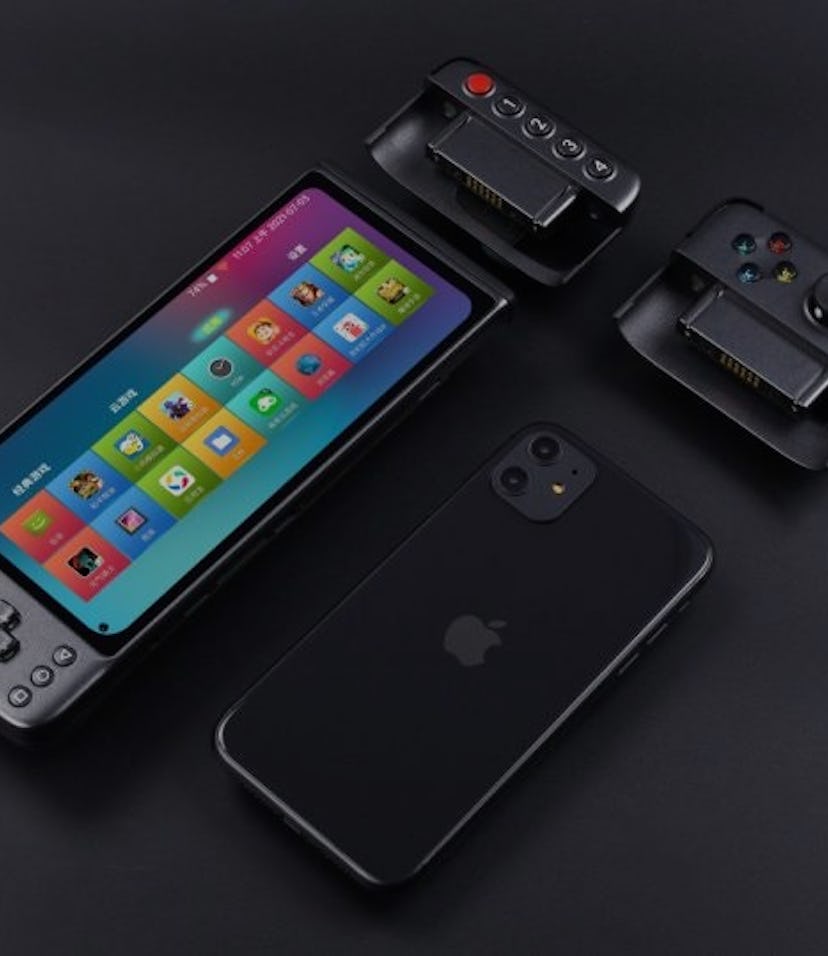Gaming
Can Android handhelds survive the Steam Deck?
Not if they’re priced at $340 like the GPD XP. Valve’s $400 Steam Deck is putting the squeeze on Android handhelds like never before.

There’s been an absolute explosion in demand for emulation handhelds ever since the Nintendo Switch came out. Just last year, I bought an emulation handheld for less than $100.
It’s almost like there’s a new one announced every week. The GPD XP is one of the latest handhelds powered by Android. Apart from a lack of a microphone to make calls, it actually is a phone — you can use a 4G SIM card for cellular data.
The specs seem stacked on paper: MediaTek Helio G95 chipset, 6GB of RAM, a big 7,000 mAh battery, and a wide 6.81-inch screen. The GPD XP sounds like a beast compared to most other emulation handhelds. It’s even got a modular design that lets you swap out controllers with options for an Xbox, FPS, or MOBA layout.
There’s just one thing that’s bother me: its $340 price. That’s $10 less than the Switch OLED and $60 less than the Steam Deck, which starts at $400. With Valve really putting the squeeze on everyone, I have to wonder if $340 is too much to ask for an Android handheld. That kinda money for a handheld that plays PC games — sure. But not for an Android handheld, in my opinion.
Handheld domination — The Steam Deck — even with its delay to 2022 — has turned the handheld market upside down. It made us question the longevity of the Nintendo Switch. Being able to play a decent portion of my Steam catalog on a handheld for $400 is a hell of a value. Who here with a backlog longer than a CVS receipt can say they don’t want something like the Steam Deck? And with RetroArch downloadable on Steam, its potential for emulation can’t be ignored.
While the Steam Deck comes in three different models, the specs are the same across all three. The only difference is that the two more expensive models are equipped with faster NVMe SSDs with larger capacities. The device has a 7-inch touchscreen, large controllers, and an AMD APU using AMD’s latest Zen 2 and RDNA 2 architectures for CPUs and GPUs, respectively. Put another way: the APU on the Steam Deck is based off the same tech used on PlayStation 5 and Xbox Series X/S. Sure, there are Windows handhelds with Ryzen CPUs that cost up to $1,000, but there’s nothing like the Steam Deck at the price point it’s selling at.
Not cutting it — As the GPD XP offers, the current landscape of Android-based emulators means most of them are quite cheap. The only real shortcoming is that most of them are underpowered. For example, the Retroid Pocket 2 is only capable of playing Nintendo 64 or Dreamcast games.
Another recent handheld, the AYN Odin, runs on Android 10 and starts at $200. The $300 Odin Pro is beefier and has a Snapdragon 845 chip, 8GB of RAM, and a bigger 6,000 mAh battery. But, even with a Snapdragon 845 and all the other specs, the Steam Deck blows it away. These two devices are the best current Android handhelds and they’re still not good enough. But they are more affordable, so that’s the tradeoff.
And why pay so much money for the GPD XP when you can connect a controller like the Razer Kishi or GameSir’s X2 to your phone for under $100. Emulation is damn easy on Android phones since there are no restrictions like there are on iPhone.
Too big to fail — Even if an Android handheld could match the Steam Deck’s specs, it wouldn’t come with the support of Valve. You’re basically on your own to figure out what works and what doesn’t. Android emulators won’t guarantee performance the way Valve will with Steam Deck.
So back to the question of whether Android handhelds can survive in a world where the Steam Deck exists? Not at similar price. Android handhelds only have appeal if the price is low. They can’t compete otherwise.